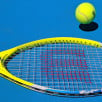
Variables to consider when betting on golf
Bryan Nicholson
13 November 2023
How do we find an edge on the golf markets? We must factor in information and angles that aren’t relayed in the odds. These angles need to be strong enough to overcome the margin or overround (or juice/vig in American lingo) built into the markets (for profit and protection) by the bookmakers or layers. Golf betting markets will have a high overround unless you are betting with an exchange like Smarkets.
The high juice at sportsbooks is the sum of small theoretical percentages built into several players, meaning we can often find a handful of overpriced guys with positive expected value. The more savvy of bettors will understand that a high book overround or margin can mean extra uncertainty. Given the vig in outright golf markets is split between dozens of live runners there’s room to find some nice value bets, but how do we go about finding them?
Course Fit and Course History
Course fit is still not factored correctly into the market. The market doesn’t understand true course fit and this is why the phenomenon is the most important variable to help you find an edge in golf betting. Course history data is only a small piece of evidence towards course fit. Course fit in golf betting is simply a measure of how suitable each individual player is to different courses using their specific skill sets. A player with a very strong course fit is expected to pick up around 2 strokes per round versus what would be deemed a neutral course for them. If a golfer shows strong course history, it’s usually statistically significant, even over a smaller sample.
We can play around with the Strokes Gained data to try and gauge course fit but it’s vital to watch the tournaments to see how the courses play and what type of players and skill sets each track rewards. This is largely subjective, or qualitative over quantitative. Players are gaining strokes with their strengths on courses that allow them to do so, not on neutral courses. The most predictive of the SG metrics is strokes gained approach.
Progressive Form
Progressive form refers to players who are trending in the right direction and this concept goes one step further than current form, whereas the markets are priced on the bare form data. Guys are only as good as their last few weeks on the links and spotting upwardly trends in their play is a signal that they are about to peak. Top form tends to come in spurts, and we can often get 1-3 weeks grace before the bookies or market catches up when pricing from the data alone. We can catch some bargains through pricing inefficiencies. Look for guys that are shooting low rounds or putting three good rounds together with one poor round, leading to the data massaging true form.
Weather and Draw Bias
I did an in-depth study on the effect of wind in golf betting and the result as a rule of thumb was that for every 1 mph in wind, the scoring average on the PGA Tour or DP World Tour goes up by ~0.1 strokes per round. The morning waves are usually at a significant advantage which averages out to nearly 1 full shot over the season on the higher echelons of the leaderboard. The wind is very under weighted in golf betting and is the biggest factor in terms of dictating the scores and randomising the event. The general pattern we’ll see is an increase of 8-10 mph in wind speed from morning to afternoon, with conditions firming up.
Basic Golf Betting Probabilities
We are looking at an elite pro making a birdie or a bogey on a par 4 around 1 time in every 4 or so holes. Going birdie-birdie back-to-back is around a 1 in 16 shot. We are likely to see an eagle on a par 5 around 1 time in 30 tries.
A study I did recording around 230,000 shots on par 3s determined that the odds for a hole in one from an elite pro (from one attempt) is about 1900 to 1. In season 2021, I recorded 81 tournaments across the PGA Tour and DP World tour and 37 of these saw no hole in one. 19 tournaments had 2 or more holes in one. In a full field PGA Tour or DP World Tour event the average odds for the tournament to see an albatross over the 4 days of play averages out at around 18 to 1.
On the greens, the professional player is expected to hole from 20 feet less than 20% of the time. The breakeven percentage is 8 feet for a top tour pro. They will hole half the time from this range on average.
Bryan Nicholson
13 November 2023


